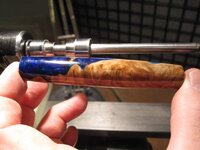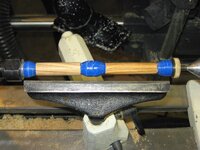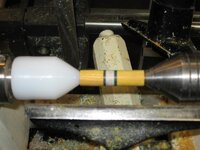So I'm getting conflicting info from people on CA finish...
I watched Grub32's video and I understand how to do that...
He doesn't sand between coats... do you guys do? what grit?
After he finishes he goes to MM... do you guys start lower than that?
Before you apply the CA... how high do you sand to? 800, 1200, 600?
When I applied the CA I was using thin, a paper towel, and 800 RPM. What I ran into was that the paper towel was heating up really quickly. Does this happen to you? Was I applying to much force? I was putting the CA on the paper towel. It feels to me like if I apply it to the blank then it goes everywhere.
Thanks guys,
Jonathan
I watched Grub32's video and I understand how to do that...
He doesn't sand between coats... do you guys do? what grit?
After he finishes he goes to MM... do you guys start lower than that?
Before you apply the CA... how high do you sand to? 800, 1200, 600?
When I applied the CA I was using thin, a paper towel, and 800 RPM. What I ran into was that the paper towel was heating up really quickly. Does this happen to you? Was I applying to much force? I was putting the CA on the paper towel. It feels to me like if I apply it to the blank then it goes everywhere.
Thanks guys,
Jonathan



